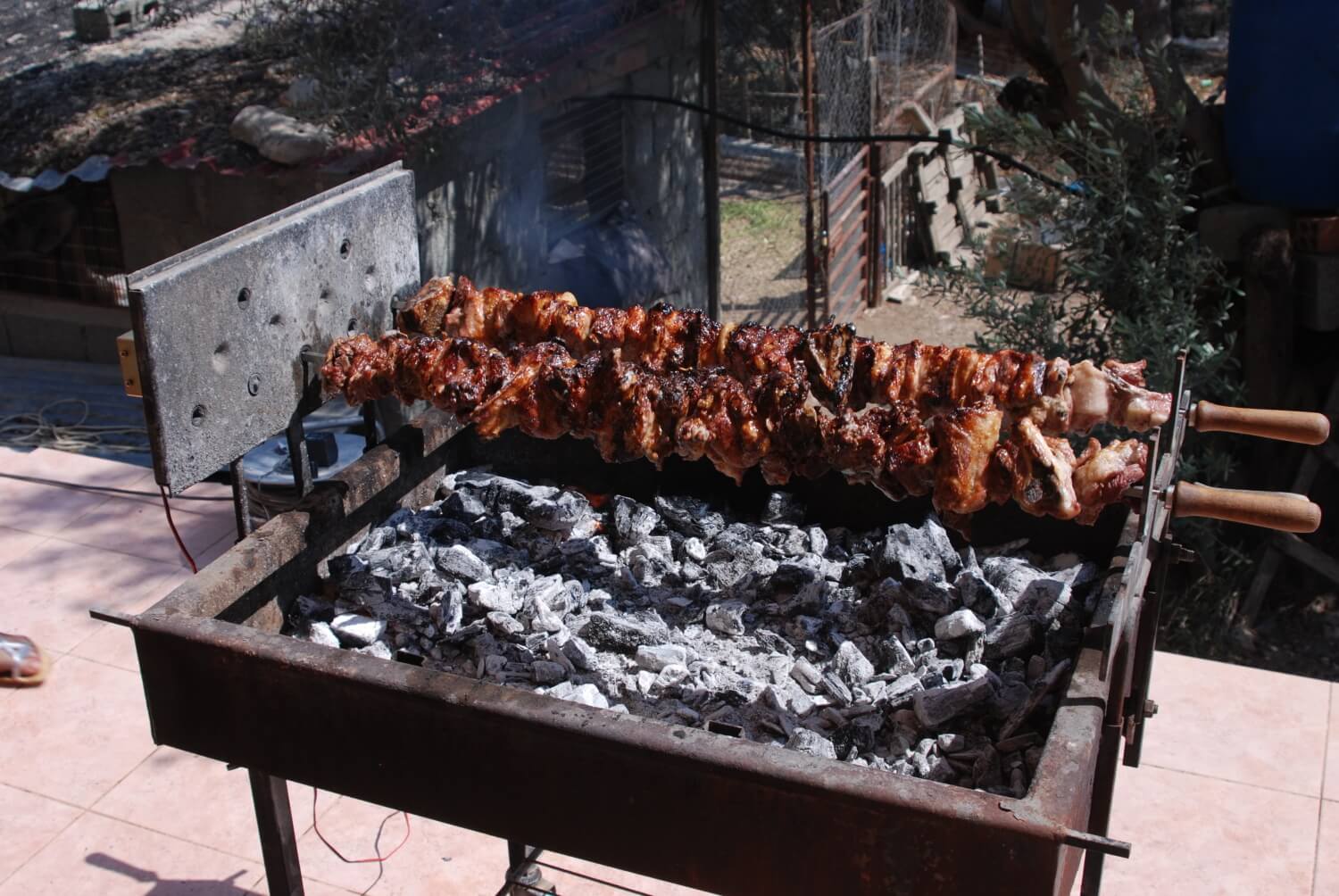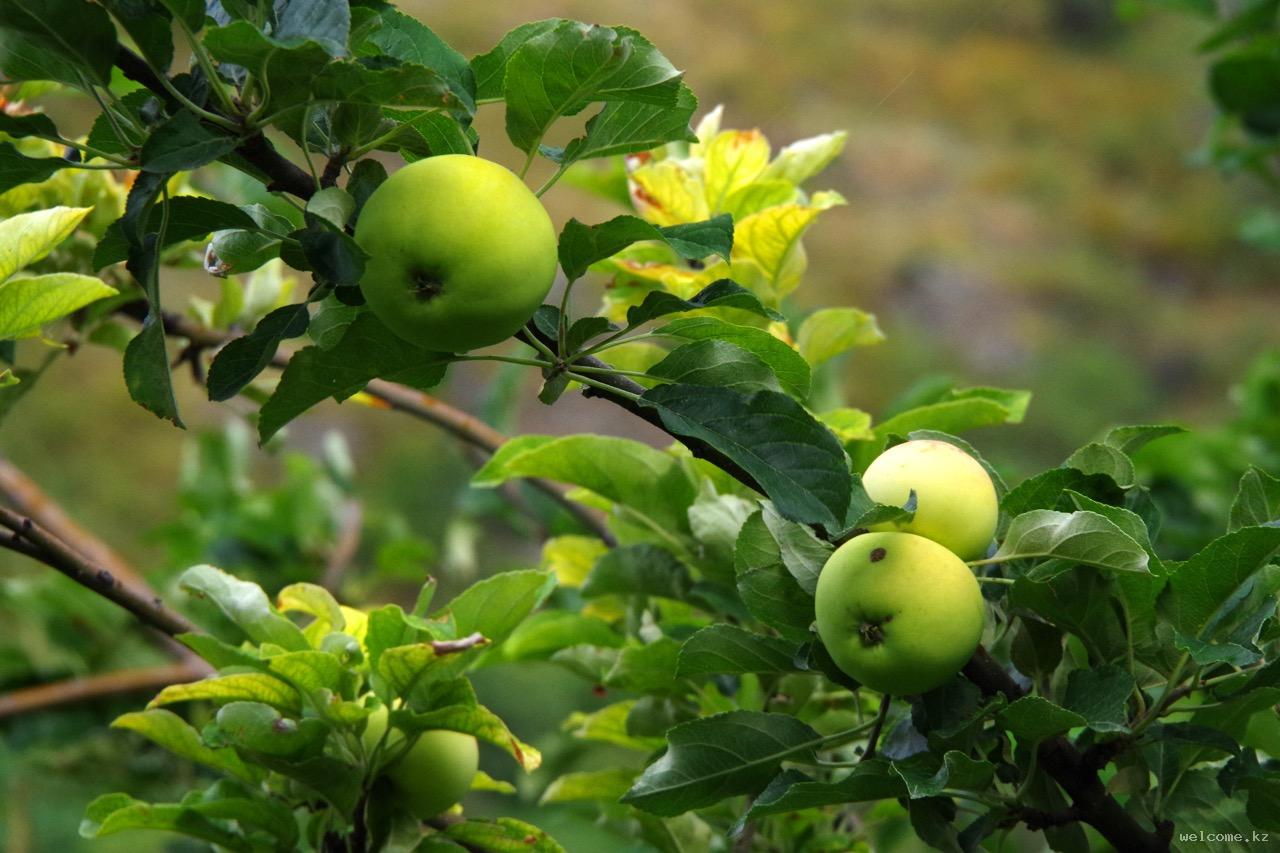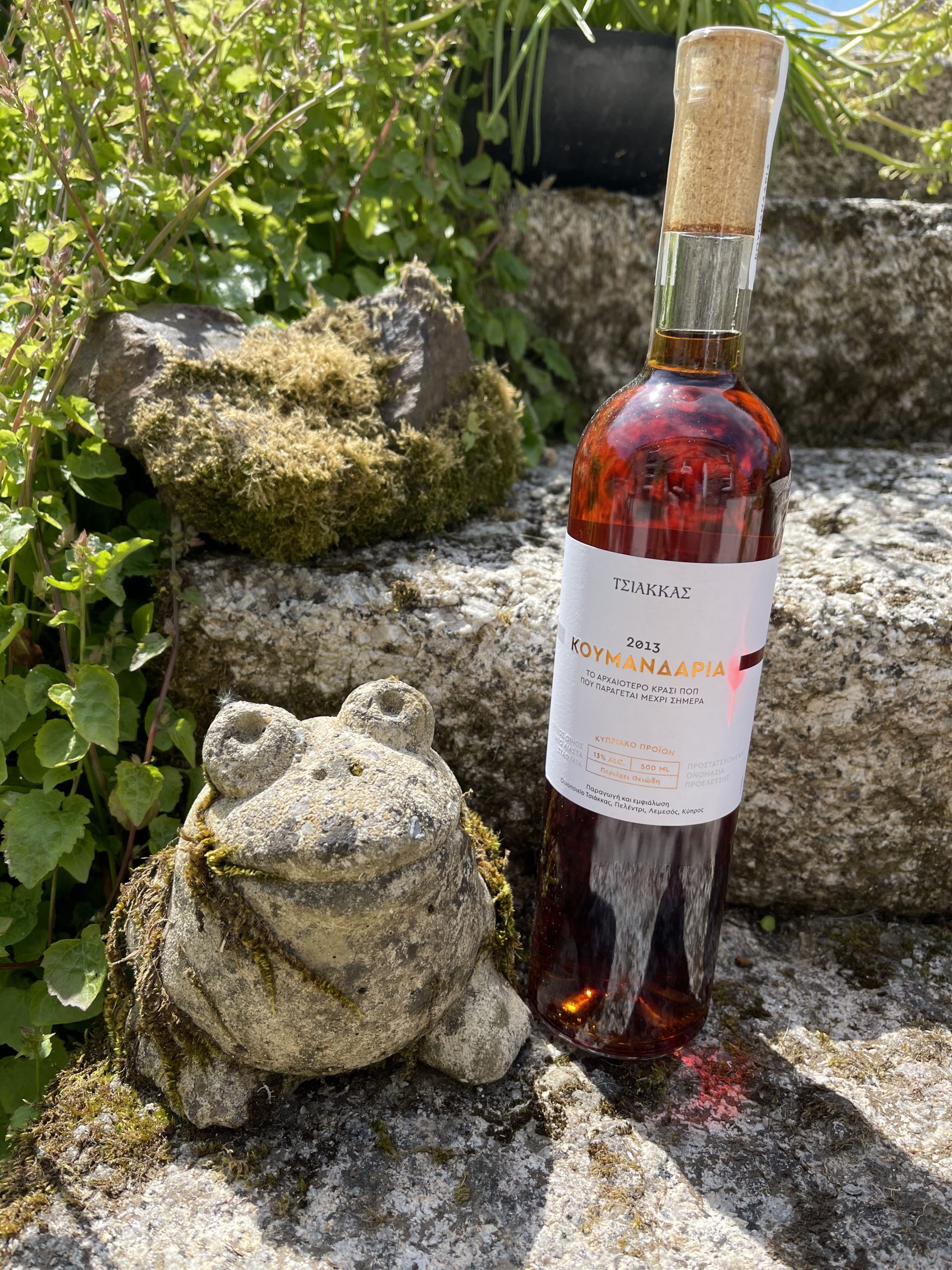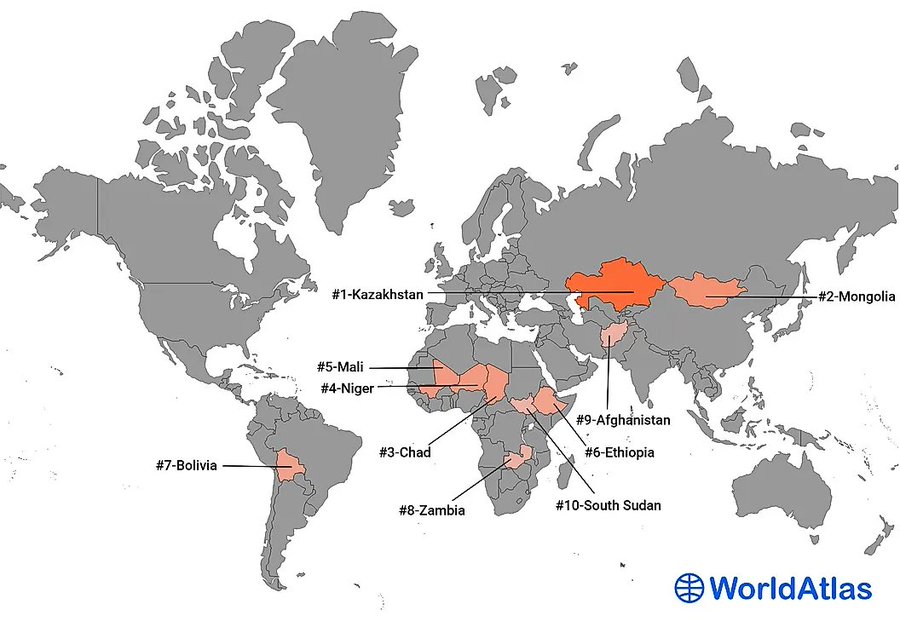9. Souvla
Souvla is a traditional Cypriot food typically prepared for special occasions such as Sunday dinners, parties, or holiday celebrations. This mouthwatering dish features large pork shoulder, lamb, or chicken chunks.
To make soulva, locals marinate the meat in lemon juice, olive oil, and aromatic herbs like thyme, oregano, and bay leaves. Then, they skewer and place it on a traditional Cypriot rotisserie grill called foukou, positioning it high over charcoal coals for slow roasting.
The skewers are carefully turned and adjusted throughout the cooking process to ensure even meat browning. They also add rosemary and bay leaves to enhance the delightful aroma.

10. Halloumi cheese - A medioeval cheese still very appreciated that Cyprus has recovered and gained as an aboriginal product.
Taken from Wikipedia starts after the line.
Halloumi or haloumi is a cheese of Cypriot origin made from a mixture of goat's and sheep's milk, and sometimes also cow's milk. Its texture is described as squeaky. It has a high melting point and so can easily be fried or grilled, a property that makes it a popular meat substitute. Rennet (mostly vegetarian or microbial) is used to curdle the milk in halloumi production, although no acid-producing bacteria are used in its preparation.
Halloumi
Halloumi is popular throughout the Eastern Mediterranean. It became widely available in Turkey after 2000. By 2013, demand in the United Kingdom had surpassed that in every other European country except Cyprus.
In the United States, Halloumi is a registered trademark owned by the government of Cyprus, while in the UK it is owned by the Foundation for the Protection of the Traditional Cheese of Cyprus named Halloumi. It is also protected as a geographical indication in the EU, as a Protected Designation of Origin (PDO), which means within the EU only products made in certain parts of Cyprus can be called "halloumi". PDO protection for Halloumi was delayed largely by disagreements among farmers of cattle, sheep, and goats regarding the inclusion of cows' milk, and (if cows' milk were included) the proportion of it.
Etymology
The English name halloumi is derived from Modern Greek: χαλλούμι [xaˈlumi], khalloúmi, from Cypriot Maronite Arabic xallúm, ultimately from Egyptian Arabic: حلوم ḥallūm [ħalˈluːm].
The Egyptian Arabic word is itself a loanword from Coptic ϩⲁⲗⲱⲙ halōm (Sahidic) and ⲁⲗⲱⲙ alōm (Bohairic), and was used for cheese eaten in medieval Egypt. The name of the cheese likely goes back to the Demotic word ḥlm "cheese" attested in manuscripts and ostraca from 2nd-century Roman Egypt.
The Cypriot Turkish name hellim derives from this source, as does the name of the different modern Egyptian cheese hâlûmi.
History
The methods of making halloumi likely originated sometime in the Medieval Byzantine period (AD 395–1191). A recipe for enhancing ḥalūm ('cheese') by brining is found in the 14th-century Egyptian cookbook كنز الفوائد في تنويع الموائد : Kanz al-Fawāʾid fī Tanwīʿ al-Mawāʾid.
The earliest known surviving descriptions of Cypriot halloumi were recorded in the mid-16th century by Italian visitors to Cyprus, where it is often said to have originated. However, the question of whether the recipe for the quintessential halloumi was born in Cyprus and then travelled to Lebanon and the rest of the Levant, or whether the basic techniques of making cheese that resists melting evolved over time in various parts of the eastern Mediterranean—or both—does not have a definitive answer.
Traditionally, Cypriot halloumi was made from sheep and/or goat's milk, since there were few cows on the island until they were brought over by the British in the 20th century. But as demand grew, industrial cheese-makers began using more of the cheaper and more plentiful cow's milk.
Overview and preparation
Although it can be consumed raw, halloumi is often used in cooking and can be fried until brown (without melting) due to its higher-than-typical melting point. This makes it an excellent cheese for frying or grilling (as in saganaki) and serving either as is, or with vegetables, or as an ingredient in salads or sandwiches. There are many recipes that use halloumi beyond simple grilling.
Traditional halloumi is a semicircular shape, weighing 220–270 grams (7.8–9.5 oz). The fat content is approximately 25% wet weight, 47% dry weight with about 17% protein. Its firm texture when cooked causes it to squeak on the teeth when being chewed.
Traditional halloumi is typically made from fresh, unpasteurised sheep and/or goat's milk. However, for its commercial production a mixture of pasteurized sheep, goat and occasionally cow's milk is used (with the cow's milk making up the lowest proportion of the milk used, if used at all).
Two main types of halloumi exist- fresh and mature. Fresh halloumi has a semi-hard, elastic texture and a milder, less salty flavor, compared to the aged version. As mature halloumi is stored in brine it has a harder, drier texture, as well as a saltier flavor. Both versions have a slight minty flavor, due to the addition of spearmint during the production of the cheese.
Sealed, halloumi (both fresh and mature) can last in a refrigerator for as long as a year.
Production
The first step of halloumi production involves the coagulation of the milk in order to make curds. This occurs by stirring rennet into the milk mixture while keeping it at a temperature of 30–34 °C until the milk coagulates (a process which takes approximately 30–45 minutes). Once the curd is formed it is then cut, reheated and stirred in order to increase its firmness. The curds are then added to special molds and pressed until a sufficient amount of whey has been removed.
The next step of production involves the boiling of the pressed curds in hot whey (collected during the pressing of the curds) for at least 30 minutes, during a process known as scalding. This is the most crucial step in the halloumi production as it contributes to the characteristic texture of the cheese. The cooked pieces are then removed from the whey and are salted and garnished with fresh or dried mint (Mentha viridis) leaves. They are then folded and stored in salted whey for 1–3 days before being packed in airtight containers, ready to be sold and consumed.
For the production of mature halloumi, the cheese needs to be kept in the brine whey for at least 40 days.
Nutritional facts
100 grams (3.5 oz) of commercially produced packaged halloumi typically contains:
Fat. 26.9 g
Carbohydrate. 2.2 g
Protein. 21.2 g
Energy. 336 kcal
Salt. 2.8 g
1. Berkutchi
Berkutchi is a famous practice in Kazakhstan that involves hunting with eagles Eagles are trained to capture different prey, such as rabbits, foxes, and small birds. Some hunters also train falcons to do the same thing.
There is a traditional belief amongst hunters about the prey they catch using eagles. It is said that they must keep the kill for at least one year to enhance their luck.

2. Kazakhstan is the world's largest landlocked country (18.8 million population & 2.7 million square kilometres of land) while Ethiopia is the world's most populous landlocked country (120 million population & 1.1 million square kilometres of land).
Kazakhstan become landlocked with her own independence while Ethiopia became landlocked with Eritrea's independence.
3. Kazakhstan is extremely ethnically diverse
When it comes to ethnic diversity, Kazakhstan is nowhere near lacking. In fact, Kazakhstan is home to a whopping 120 ethnic groups and nationalities. Following the Kazakhs, the largest ethnic groups are made up of Russians, Ukrainians and Uzbeks. https://www.enjoytravel.com/us/travel-news/interesting-facts/interesting-facts-kazakhstan
https://www.enjoytravel.com/us/travel-news/interesting-facts/interesting-facts-kazakhstan
4. Beshbarmak
One of the interesting facts about Kazakhstan is its unique food offerings. The national dish of the nation is Beshbarmak. It is also called “five fingers” by locals because all fingers are used in eating the meal.
The dish involves large pieces of mutton or horse meat placed on noodles that are boiled in a unique gravy or broth. Vegetables such as onions and parsley are also added to complete the dish.

5.Baikonur Cosmo drome
Baikonur Cosmo drome in Kazakhstan was the world's first and largest operational space launch facility.

6. Horse Milk
The national drink of Kazakhstan is a rather unique beverage made using horse milk. It is called kumis and is loved by most adults.
Milk from a horse is fermented to make this slightly sour drink. Local traditions believe that kumis has healing properties that are believed to cure flu, tuberculosis, and other diseases.

7. Extreme altitudes in Kazakhstan.
The highest point in Kazakhstan is Mt. Khan Tengri of the Tian Shan mountain range. At 23,000 feet (7010 m), it is also the world’s most northern 7000-m The lowest point in Kazakhstan is the bottom of the Karagiye Depression at 433 feet (132 m) below sea level. Located east of the Caspian Sea, it is one of the lowest elevations on Earth.

8. Snow Leopards
Snow leopards are the country’s symbol, and locals respect this creature for its high bravery and independence. This shy animal is an endangered specie listed in the Red Book of Kazakhstan.
Snow leopards are beautiful and intelligent animals. They are also rare in other parts of the world because of their low numbers. Only 3,500 to 7,000 snow leopards are found in the wild.

9.Apple
Kazakhstan is known not only for its vast landscapes and diverse culture but also for being the birthplace of all domesticated apple trees in the world. The wild Sievers apple (Malus sieversii) tree grows in the southern part of Kazakhstan in the foothills of the Dzungarian Alatau, and it has become the progenitor of more than 10.5 thousand cultivars of apples that exist today.
The Sievers apple tree is a very stable and strong variety, and it was these qualities that allowed it to become the ancestor of all apples in the world. It is not known for certain when the first trees appeared, but in different sources, the numbers vary, with some suggesting that they grew even several thousand years before our era.
10. Astana - The capital with 5 names.
Capital city in Kazakhstan is Astana, previously used but known as Nur Sultan between 2017 and 2022, that was previously known as Astana (1998 - 2017 and 2022 to now) and before as Tselinograd (1961 - 1991) which means the city with virgin lands and before as Akmolinsk (1832 - 1961) and before as Akmola (1830 -18362 and 1991 -1998) which means the white grave. This Akmola name was used again between 1991 and 1998 after Kazakh independence. Guinnes Recordbook hasAstana registered as the capital that most times has changed of name.










